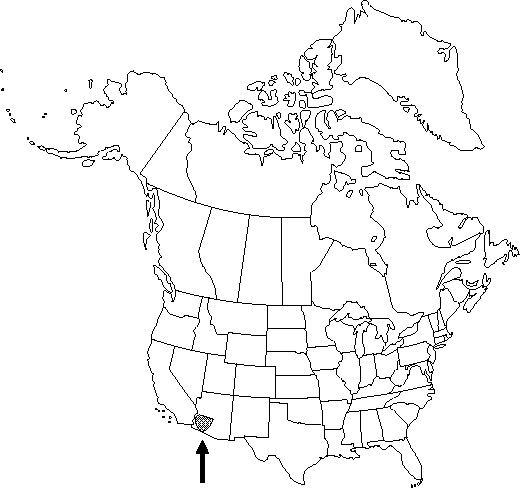Quercus ajoensis
Madroño 12: 140. 1954.
Shrubs, rarely trees, evergreen, to 2-3 m. Bark gray, scaly or furrowed. Twigs light-brown, 1-2 mm diam., inconspicuously short stellate-pubescent or glabrate. Buds brown or reddish-brown, ovoid or globose, 1-1.5 mm, variously short stellate-pubescent, tomentose, or glabrate. Leaves: petiole (2-) 3-4 m. Leaf-blade ovate to narrowly ovate or oblong, (10-) 15-35 (-50) × (5-) 10-20 (-30) mm, rather leathery, base cordate, rarely rounded, margins crispate, sometimes flat, cartilaginous, with 4-6 (-8) long-attenuate, spinose-awned teeth on each side, secondary-veins 5-8 on each side, whitish, apex acute or obtuse with bristly distal teeth; surfaces abaxially blue-green, waxy-glaucous, microscopically papillose, glabrous, sometimes sparsely stellate-pubescent along midrib, adaxially blue-green, glaucous, glabrous or sparingly stellate-pubescent along midrib, secondary-veins raised on both surfaces. Acorns solitary or paired on thin axillary peduncle (5-) 30-50 mm; cup shallowly cup-shaped, thin, 3-4 mm deep × 6-8(-10) mm wide, enclosing only base of nut, scales brownish, moderately tuberculate, pubescent; nut oblong to narrowly ovoid, 12-15 × 5-8 mm. Cotyledons distinct.
Phenology: Flowering in spring.
Habitat: Rare to locally abundant on igneous slopes
Elevation: 500-1500 m
Distribution

Ariz., Mexico (Baja California)
Discussion
Populations of Quercus ajoensis in southern New Mexico show characteristics suggesting introgression from hybridization with Quercus toumeyi, such as increased twig and leaf pubescence and sometimes the prominent golden puberulum of the abaxial leaf surfaces. Hybrids between Q. ajoensis and both Q. turbinella and Q. gambelii (Utah) are also known.
Selected References
None.
